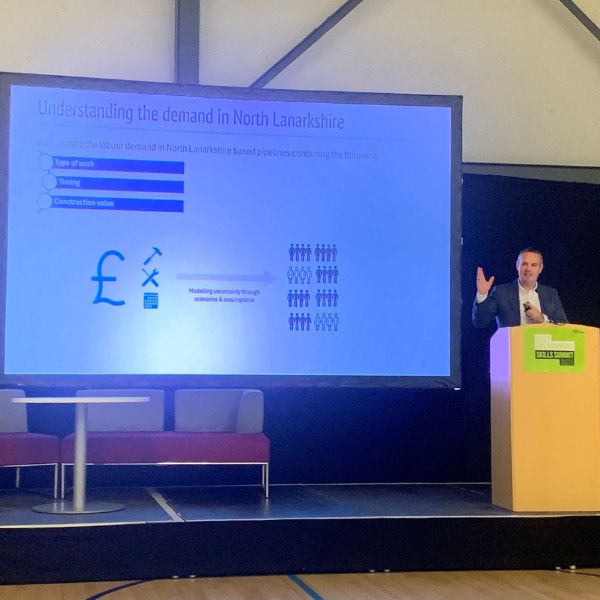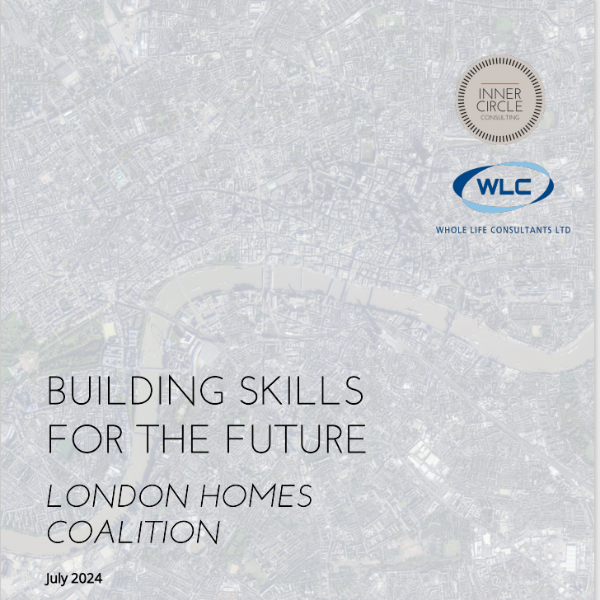Low carbon labour forecasting
Mapping the skills to deliver low carbon targets
Low carbon labour forecasting in numbers
Workforce insights from EPC data and pipeline analysis
The Low-Carbon Retrofit Labour Forecasting Tool provides a data-driven view of the workforce demands behind decarbonisation across Great Britain. Drawing on property-level EPC data, it turns retrofit requirements into clear, occupation-specific forecasts that show in detail which skills will be most needed.
Our approach:
Translate EPC data into quantified labour demand—modelling the scale and type of retrofit activity required, including assumptions for properties without certificates and for both domestic and non-domestic buildings.
Convert retrofit interventions into occupation forecasts using industry-validated labour coefficients that specify the person-years needed, by trade, to deliver each measure.
Profile demand over time under alternative rollout scenarios, revealing peaks and troughs in workforce needs.
Benchmark demand against regional capacity, combining national baselines with local intelligence to pinpoint future bottlenecks.
Low-Carbon retrofit labour forecast reports
As well as producing forecasts as part of larger pieces of work, we produce Low Carbon Labour Forecasting Reports for every local authority in Great Britain. These reports outline the most in demand low-carbon retrofit interventions and occupations, allowing users to best prepare their local workforce to deliver the net-zero transition.
Local and combined authorities
Evidence-based planning, prioritisation and investment in the right skills, in the right place, at the right time.
Developers & contractors
Plan and deliver retrofit projects with confidence, understanding the workforce required to upgrade residential and non-residential buildings
Skills & training bodies
Align courses and qualifications with industry demand to attract a new low carbon workforce.
Trusted by authorities across the UK
WLC has quantified, for the first time, the true scale of the retrofit skills gap. These findings are already influencing practice. Boroughs are aligning budgets with the identified needs, colleges are adapting courses, and employers are reworking recruitment and training strategies.
WLC’s EPC analysis showed that retrofitting buildings across the six South London Partnership boroughs will demand around 66,250 person-years of labour over five years—nearly half of all local construction labour demand—highlighting the urgent need to expand low-carbon skills and training.
WLC analysis showed that around 41,250 person-years are required to deliver EPC-recommended improvements in London’s social rental properties. Greatest pressures fall on building envelope specialists, construction supervisors, scaffolders, and roofers.

Central London Forward
WLC Ltd delivered a detailed, data-driven labour forecast modelling the workforce required to retrofit over 1.5 million properties. The analysis provided CLF with the evidence needed to plan skills, funding, and delivery at scale.
Read the report in Inside Housing.

North Lanarkshire Council
WLC Ltd is producing a detailed low-carbon workforce forecast, mapping future construction needs, identifying specific skills gaps, and profiling the local labour market—early findings are already informing training priorities and workforce development plans.

Let's start the conversation
To explore how we can support your low carbon workforce forecasting, contact our expert, Dr Jack Southgate, [email protected]


